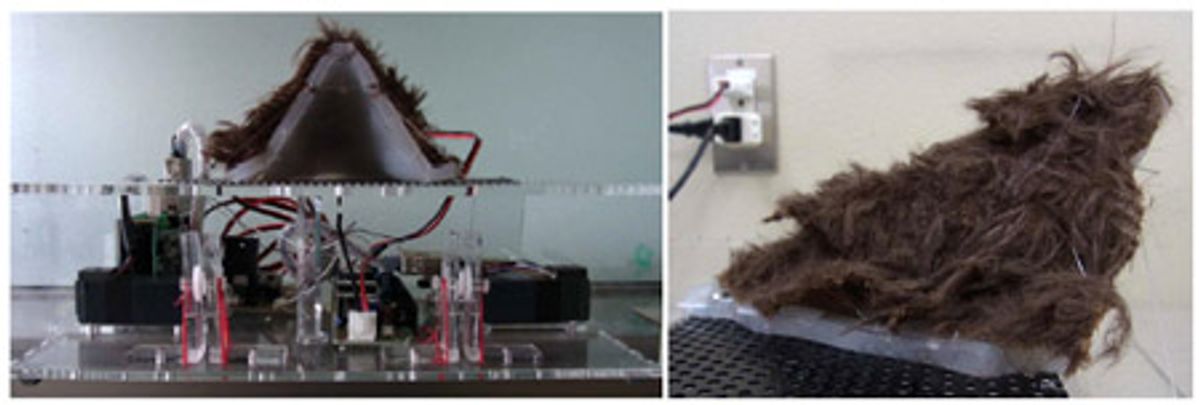Robots have ears. They're called microphones, and you usually find them just inside some tiny little hole somewhere. But you have to figure that there are good reasons why animals like this exist: big ears can confer an advantage. Namely, big ears allow animals to hear quieter sounds, and localize those sounds more precisely.
This is the idea behind "active soft pinnae," which is fancy roboticist talk for "ears that wiggle." The robotic ear in the picture above is a reasonably faithful reproduction of a kitty ear, including a fake fur covering on the back and the ability to both rotate side to side and deform downwards. There's a microphone buried down inside the ear, of course, but the external structure is the important part.
So what good is it? I mean, you can ask your cat, but testing has shown that it's possible to pinpoint the direction (azimuth and elevation) to a sound with just two wigglable ears instead of needing a complex microphone array. Furthermore, the ears can be used to localize sounds by moving independently of the head or body of a robot, which is a much more efficient approach. And of course, ears like these are awfully cute, and with the addition of some touch sensors, you could give your robot that friendly scritching that it deserves.
"Active soft pinnae for robots," by Makoto Kumon and Yoshitaka Noda from Kumamoto University in Japan, was presented at the IEEE International Conference on Intelligent Robots and Systems in San Francisco last month.
Evan Ackerman is a senior editor at IEEE Spectrum. Since 2007, he has written over 6,000 articles on robotics and technology. He has a degree in Martian geology and is excellent at playing bagpipes.




